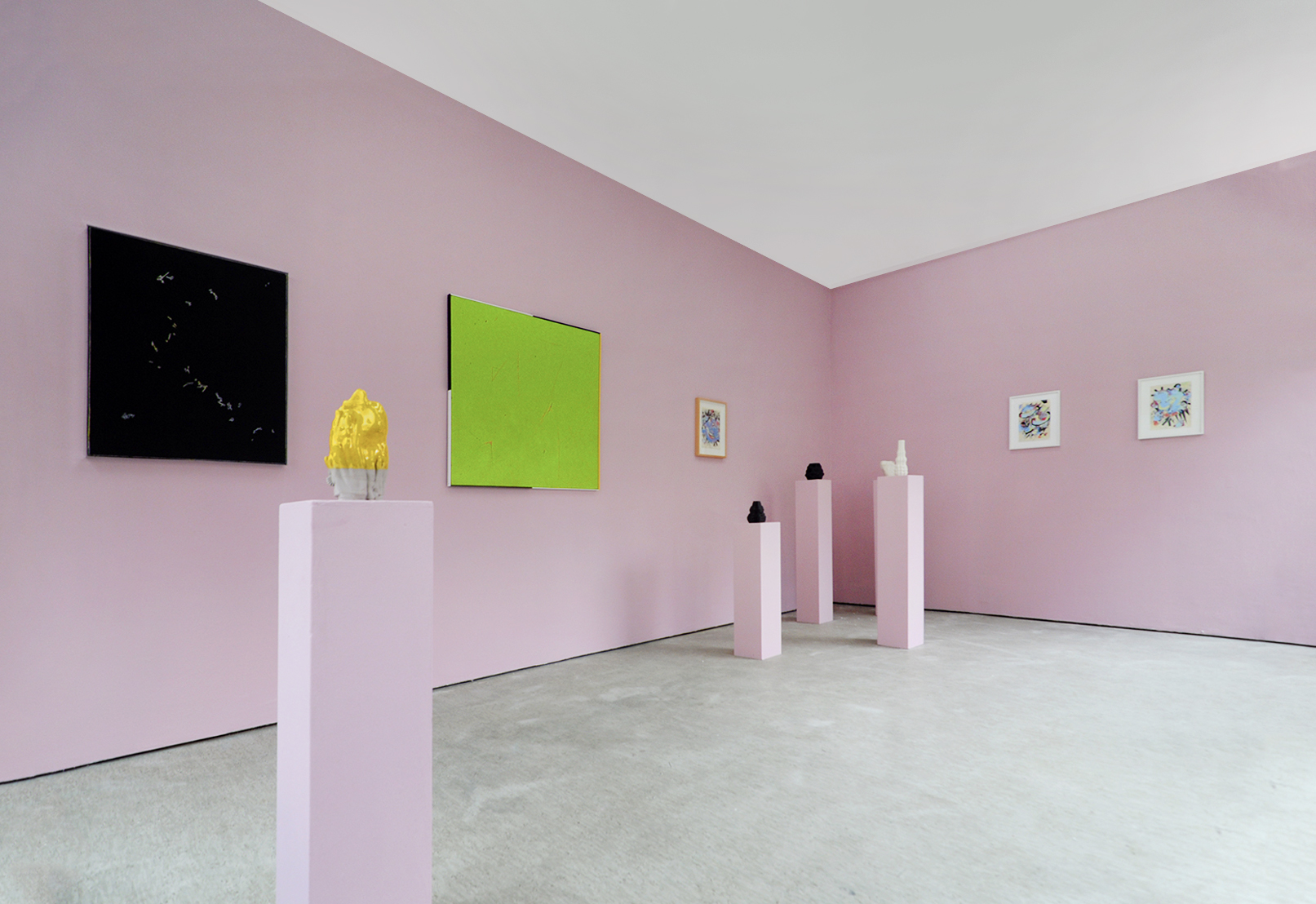Alexander Denkert, Joana Schmitz, Niklas Jeroch: Inversion : Verena Kerfin Gallery, Köthener Strasse 28, Berlin 10963
Past
exhibition
Overview
The exhibition presents a fascinating interplay of form, material, and meaning, exploring the dynamic tension between traditional craftsmanship and digital innovation. Joana Schmitz's 3D-printed ceramic vessels exemplify this duality, where the structured layering inherent to digital production is complemented by the organic imperfections of ceramic drying processes. Her work pays homage to the tactile essence of ceramics while embracing the precision and futuristic aesthetics of 3D printing. The forms oscillate between mechanical rigidity and natural fluidity, resembling flower calyces opening and closing—a metaphorical dance between containment and revelation.
Niklas Jeroch's exploration extends into the realm of intermediality, where traditional painting dialogues with digital processes. The convergence of 3D technology and classical painting is evident in his pieces, blurring the lines between two- and three-dimensionality. His works invite contemplation on the layered realities of digital and physical worlds, offering an inversion of traditional hierarchies of creation and perception. Jeroch’s approach reflects a contemporary interrogation of materiality, questioning what it means to construct and deconstruct visual narratives in a hybridized reality.
Alexander Denkert’s works bring materiality to the foreground through his multi-layered compositions. Pencil drawings overlaid with oil paint on chemically treated surfaces reflect a deep engagement with the properties and histories of materials. The visual effect is one of temporal stratification—each layer a testament to processes both deliberate and accidental. His pieces invite viewers to unravel the physical and conceptual layers, creating a tactile dialogue that transcends the visual field.
The pink-toned exhibition space acts as a cohesive element, enveloping the works in a soft, almost surreal ambiance. The deliberate choice of pastel hues contrasts starkly with the sharp, vivid forms of the artworks, emphasizing their structural and chromatic intensity. This juxtaposition underscores the thematic explorations of containment and exposure, veiling and unveiling, that permeate the exhibition.
From a historical perspective, the interplay of technology and tradition recalls the work of modernist sculptors like Constantin Brâncuși, whose emphasis on form and materiality resonates in Schmitz’s vessels. Similarly, Jeroch's intermediality draws parallels with the avant-garde practices of Bauhaus artists, who sought to dissolve barriers between fine art and technology. Denkert’s stratified surfaces echo the conceptual layering found in post-minimalist practices, such as those by Eva Hesse and Robert Rauschenberg, where the physicality of materials becomes a narrative in itself.
In this exhibition, the synergy of diverse approaches—ranging from the digital to the analog, the tactile to the conceptual—creates a cohesive yet multifaceted dialogue. Each piece functions as both an independent exploration and a node within a larger narrative, inviting viewers to reflect on the evolving relationship between form, function, and meaning in contemporary art. The works collectively challenge the boundaries of materiality, urging us to reconsider the nature of artistic creation in an age of constant transformation.
Niklas Jeroch's exploration extends into the realm of intermediality, where traditional painting dialogues with digital processes. The convergence of 3D technology and classical painting is evident in his pieces, blurring the lines between two- and three-dimensionality. His works invite contemplation on the layered realities of digital and physical worlds, offering an inversion of traditional hierarchies of creation and perception. Jeroch’s approach reflects a contemporary interrogation of materiality, questioning what it means to construct and deconstruct visual narratives in a hybridized reality.
Alexander Denkert’s works bring materiality to the foreground through his multi-layered compositions. Pencil drawings overlaid with oil paint on chemically treated surfaces reflect a deep engagement with the properties and histories of materials. The visual effect is one of temporal stratification—each layer a testament to processes both deliberate and accidental. His pieces invite viewers to unravel the physical and conceptual layers, creating a tactile dialogue that transcends the visual field.
The pink-toned exhibition space acts as a cohesive element, enveloping the works in a soft, almost surreal ambiance. The deliberate choice of pastel hues contrasts starkly with the sharp, vivid forms of the artworks, emphasizing their structural and chromatic intensity. This juxtaposition underscores the thematic explorations of containment and exposure, veiling and unveiling, that permeate the exhibition.
From a historical perspective, the interplay of technology and tradition recalls the work of modernist sculptors like Constantin Brâncuși, whose emphasis on form and materiality resonates in Schmitz’s vessels. Similarly, Jeroch's intermediality draws parallels with the avant-garde practices of Bauhaus artists, who sought to dissolve barriers between fine art and technology. Denkert’s stratified surfaces echo the conceptual layering found in post-minimalist practices, such as those by Eva Hesse and Robert Rauschenberg, where the physicality of materials becomes a narrative in itself.
In this exhibition, the synergy of diverse approaches—ranging from the digital to the analog, the tactile to the conceptual—creates a cohesive yet multifaceted dialogue. Each piece functions as both an independent exploration and a node within a larger narrative, inviting viewers to reflect on the evolving relationship between form, function, and meaning in contemporary art. The works collectively challenge the boundaries of materiality, urging us to reconsider the nature of artistic creation in an age of constant transformation.
Installation Views
×












